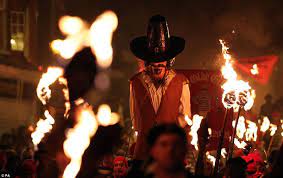
Guy Fawkes was a conspirator in the Gunpowder Plot of 1605, an attempt to blow up the House of Parliament by oppressed Roman Catholics in Britain. Guy Fawkes was born in York, England on April 13, 1570. He was the second of the couple’s four children, born to Edward and Edith Fawkes. Guy was eight years old when his father died, and his mother remarried a Catholic. Guy Fawkes became a Catholic when he was 16 years old. The Church of England did not tolerate the Catholic Church, and they were not allowed to worship freely. The Gunpowder Plot was a conspiracy in which Guy Fawkes was tried and executed for his role. Today, Guy Fawkes Day is commemorated in the United Kingdom with bonfires and fireworks to commemorate the Gunpowder Plot and Guy’s role in it.
Guy Fawkes preferred the name Guido Fawkes. Guy gave the authorities the name John Johnson after his arrest. This was also the name he used when devising the Gunpowder Plot.
During the Eighty Years War, Guy Fawkes served in the Spanish army.
Guy Fawkes was educated at York’s St. Peter’s School. Bonfire Night is not observed in St. Peters (Another name for Guy Fawkes Day).
The Gunpowder Plot was a plan to blow up 2,500 kg of gunpowder hidden beneath the House of Parliament on November 5th, 1605. The explosion would have killed King James I as well as everyone else in the building on the day of the State Opening.
Guy Fawkes’ role in the Gunpowder Plot was to protect the hidden gunpowder and light it at the appropriate time.
King James I discovered a letter addressed to Lord Monteagle, warning him to avoid the House of Commons on November 5th. One of the Gunpowder Plot conspirators knew Lord Monteagle. This letter revealed the plot.
Guy Fawkes was apprehended before the Gunpowder Plot could be carried out. He was guarding 36 barrels of lethal gunpowder in the House of Parliament’s cellar at the time.
Guy Fawkes was tortured for four days before confessing to his role in the Gunpowder Plot.
Other Gunpowder Plot conspirators included John Wright, Thomas Percy, Francis Tresham, Sir Everard Digby, Ambrose Rookwood, John Grant, Thomas Bates, Robert Keyes, Robert Wintour, and Robert Catesby.
Guy Fawkes signed a confession that is still preserved in the National Archives.
Guy Fawkes and the other Gunpowder Plot conspirators were tried in court on January 31, 1606.
For their attempted crime and plot, they were hung, drawn, and quartered.
Some believe Guy Fawkes was burned alive after his conviction, but this is not the case. To commemorate Guy Fawkes Day, people today make straw dummies of him and burn them in bonfires.
In the United Kingdom, Guy Fawkes Day is also known as Guy Fawkes Night, Bonfire Night, and Firework Night.
Despite his crime, Guy Fawkes was named the BBC’s 30th Greatest Briton in 2002.









